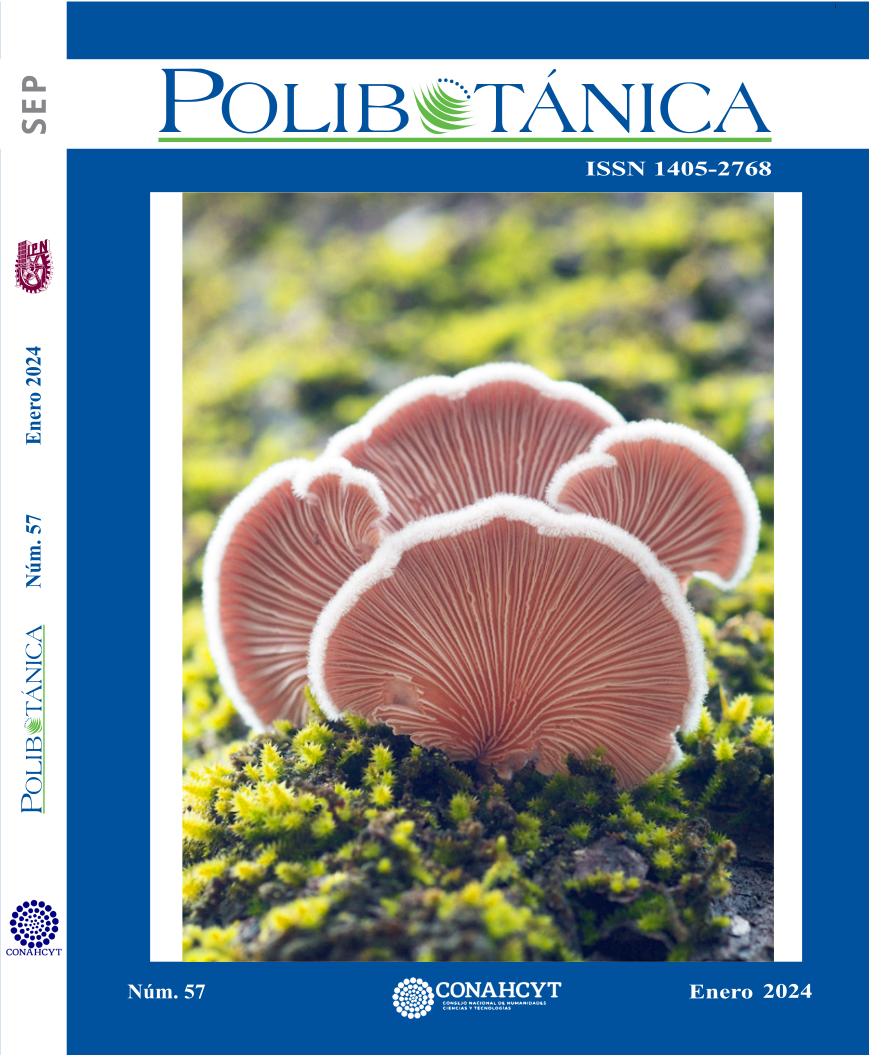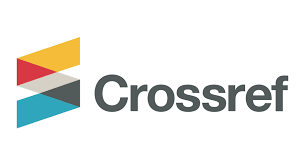Extent and severity of forest fires in Michoacan, Mexico, in 2021 based on sentinel-2 images
DOI:
https://doi.org/10.18387/polibotanica.57.7Keywords:
deciduous, Copernicus, CIre, NBR, NDVI, Sentinel-2Abstract
Forest fires are serious environmental catastrophes, recurrent in the Michoacán spring. The objective of this work was to identify the fires of 2021, evaluate the severity and recovery with Sentinel-2 images, in relation to the vegetation phenology. Five phenological groups (V1 to V5) were distinguished according to the NDVI at different dates. Burnt areas were identified by classifying the May image. The severity was determined from the dNBR in spring and the recovery with the dNDVI and the dCIre, in spring and winter. Of V1 (low density deciduous shrub), 15161 ha (31%) were burned, 72% with low or moderate-low damage, due to the scarcity of fuel material; a great regeneration capacity was observed. Of V2 (high density deciduous, oaks), 17029 ha (34%) were burned, 64% with moderate-high or high affectation, due to the accumulation of highly combustible dry biomass; there was regrowth after moderate fires. Of V3 and V4 (low and high density evergreen, conifers) 1999 ha (4%) and 7366 ha (15%) were burned, 95% and 79% with low or moderate-low damage, due to the presence of vegetation green and moisture; there was recovery after minor fires, with greater resilience in V4. Of V5 (low deciduous forest) 7967 ha (16%) were burned, 91% with low or moderate-low damage, with greater recovery observed in the most affected areas, as a positive effect of the fire. Remote sensing is a very versatile tool for fire assessment and recovery monitoring.
References
Barmpoutis, P., Papaioannou, P., Dimitropoulos, K., & Grammalidis, N. (2020). A review on early forest fire detection systems using optical remote sensing. Sensors (Switzerland), 20(22), 1–26. https://doi.org/10.3390/s20226442
CEDRSSA (Centro de Estudios para el Desarrollo Rural Sustentable y la Soberanía Alimentaria). (2017). Caso de exportación: El aguacate.
Chuvieco, E., Mouillot, F., van der Werf, G. R., San Miguel, J., Tanasse, M., Koutsias, N., García, M., Yebra, M., Padilla, M., Gitas, I., Heil, A., Hawbaker, T. J., & Giglio, L. (2019). Historical background and current developments for mapping burned area from satellite Earth observation. Remote Sensing of Environment, 225, 45–64. https://doi.org/10.1016/j.rse.2019.02.013
Clevers, J. G. P. W., & Gitelson, A. A. (2013). Remote estimation of crop and grass chlorophyll and nitrogen content using red-edge bands on sentinel-2 and-3. International Journal of Applied Earth Observation and Geoinformation, 23(1), 344–351. https://doi.org/10.1016/j.jag.2012.10.008
Durán, C. V., & Sevilla, P. F. (2003). Atlas geográfico del estado de Michoacán (Universidad Michoacana de San Nicolás de Hidalgo, El Colegio de Michoacán, Secretaría de Educación en el estado de Michoacán., & EDDISSA (eds.), Eds.).
España-Boquera, M. L., & Champo-Jiménez, O. (2011). Proceso de deforestación en el municipio de Cherán, Michoacán, México (2006-2012) (Vol. 22).
Fernández-García, V., Quintano, C., Taboada, A., Marcos, E., Calvo, L., & Fernández-Manso, A. (2018). Remote sensing applied to the study of fire regime attributes and their influence on post-fire greenness recovery in pine ecosystems. Remote Sensing, 10(5). https://doi.org/10.3390/rs10050733
Franco, M. G., Mundo, I. A., & Veblen, T. T. (2020). Field-validated burn-severity mapping in North Patagonian forests. Remote Sensing, 12(2). https://doi.org/10.3390/rs12020214
Lentile, L. B., Holden, Z. A., Smith, A. M. S., Falkowski, M. J., Hudak, A. T., Morgan, P., Lewis, S. A., Gessler, P. E., & Benson, N. C. (2006). Remote sensing techniques to assess active fire characteristics and post-fire effects. In International Journal of Wildland Fire (Vol. 15, Issue 3, pp. 319–345). https://doi.org/10.1071/WF05097
Llorens, R., Sobrino, J. A., Fernández, C., Fernández-Alonso, J. M., & Vega, J. A. (2021). A methodology to estimate forest fires burned areas and burn severity degrees using Sentinel-2 data. Application to the October 2017 fires in the Iberian Peninsula. International Journal of Applied Earth Observation and Geoinformation, 95. https://doi.org/10.1016/j.jag.2020.102243
Meng, R., Wu, J., Zhao, F., Cook, B. D., Hanavan, R. P., & Serbin, S. P. (2018). Measuring short-term post-fire forest recovery across a burn severity gradient in a mixed pine-oak forest using multi-sensor remote sensing techniques. http://www.elsevier.com/open-access/userlicense/1.0/2
Navarro, G., Caballero, I., Silva, G., Parra, P.-C., Vázquez, Á., & Caldeira, R. (2017). Evaluation of forest fire on Madeira Island using Sentinel-2A MSI imagery. International Journal of Applied Earth Observation and Geoinformation, 58, 97–106. https://doi.org/10.1016/j.jag.2017.02.003
Rzedowski, J. (2006). Vegetación de México (Comisión Nacional para el Conocimiento y Uso de la Biodiversidad de México, Ed.; 1ra. Edición digital).
Sáenz-Ceja, J. E., & Pérez-Salicrup, D. R. (2021). Avocado Cover Expansion in the Monarch Butterfly Biosphere Reserve, Central Mexico. Conservation, 1(4), 299–310. https://doi.org/10.3390/conservation1040023
SEMARNAT-CONAFOR, C. G. de C. y Restauración. G. de M. del Fuego. (2022). Cierre estadístico 2021.
Sobrino, J. A., Llorens, R., Fernández, C., Fernández-Alonso, J. M., & Vega, J. A. (2019). Relationship between forest fires severity measured in situ and through remotely sensed spectral indices. Forests, 10(5). https://doi.org/10.3390/f10050457
Szpakowski, D. M., & Jensen, J. L. R. (2019). A review of the applications of remote sensing in fire ecology. In Remote Sensing (Vol. 11, Issue 22). MDPI AG. https://doi.org/10.3390/rs11222638
Westerling, A. L., Hidalgo, H. G., Cayan, D. R., & Swetnam, T. W. (2006). Warming and earlier spring increase western U.S. forest wildfire activity. Science, 6789, 940–943. https://doi.org/https://doi.org/10.1126/science.1128834
White, J. D., Ryan, K. C., Key, C. C., & Running, S. W. (1996). Remote Sensing of Forest Fire Severity and Vegetation Recovery. In Int. J. Wildland Fire (Vol. 6, Issue 3).
Downloads
Published
Issue
Section
License

Polibotánica by Departamento de Botánica de la Escuela Nacional de Ciencias Biológicas del Instituto Politécnico Nacional se distribuye bajo una Licencia Creative Commons Atribución-NoComercial-CompartirIgual 4.0 Internacional.




















